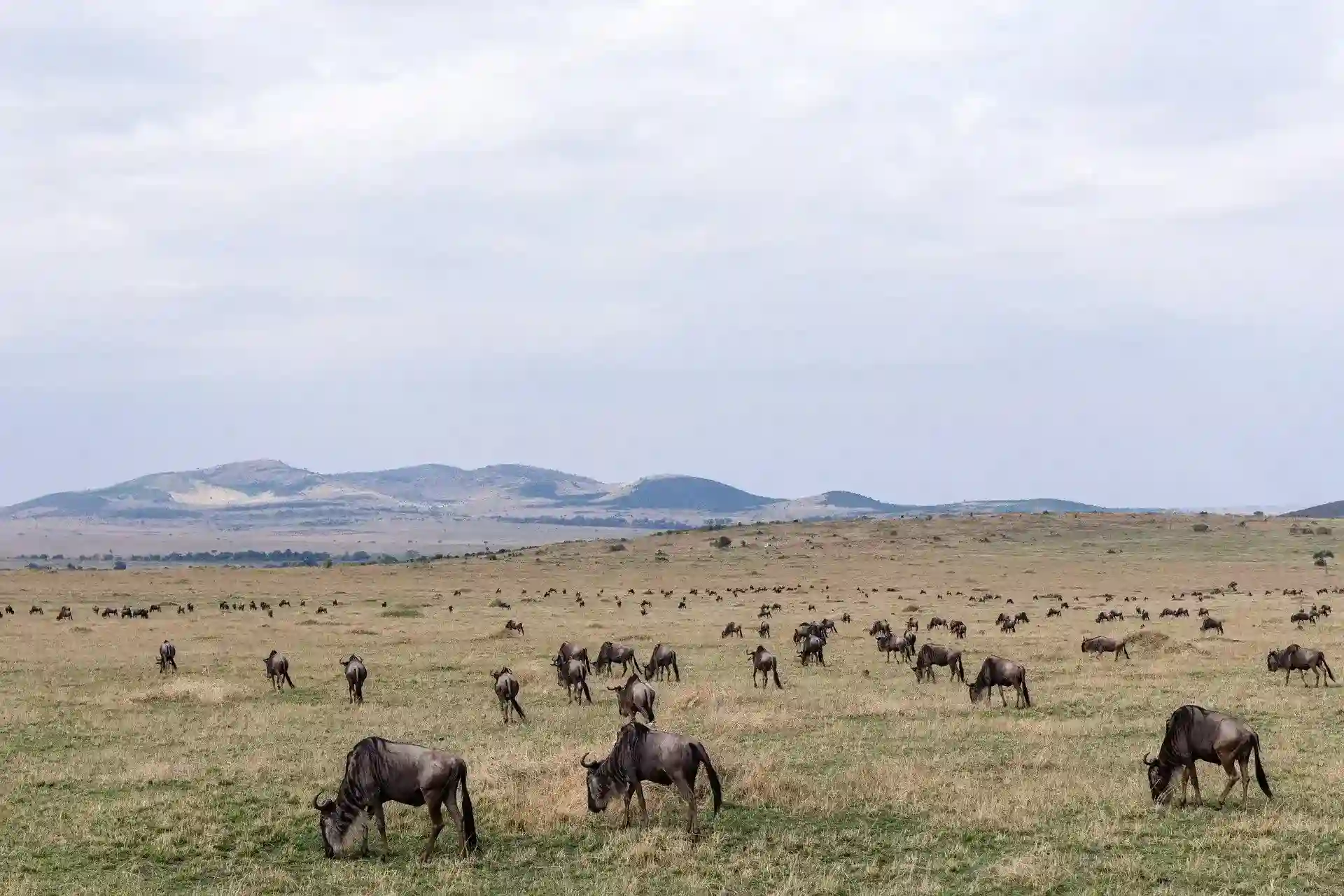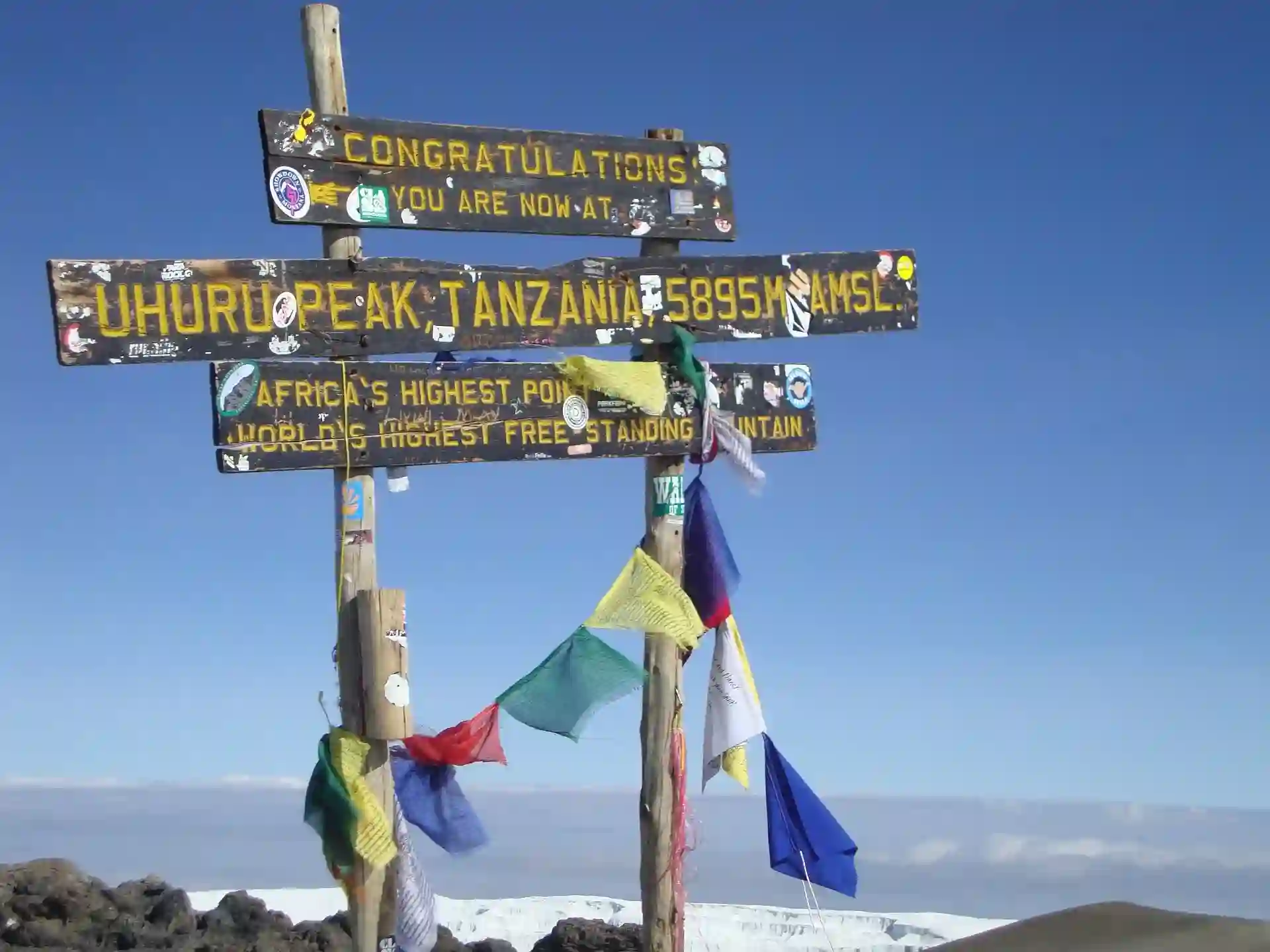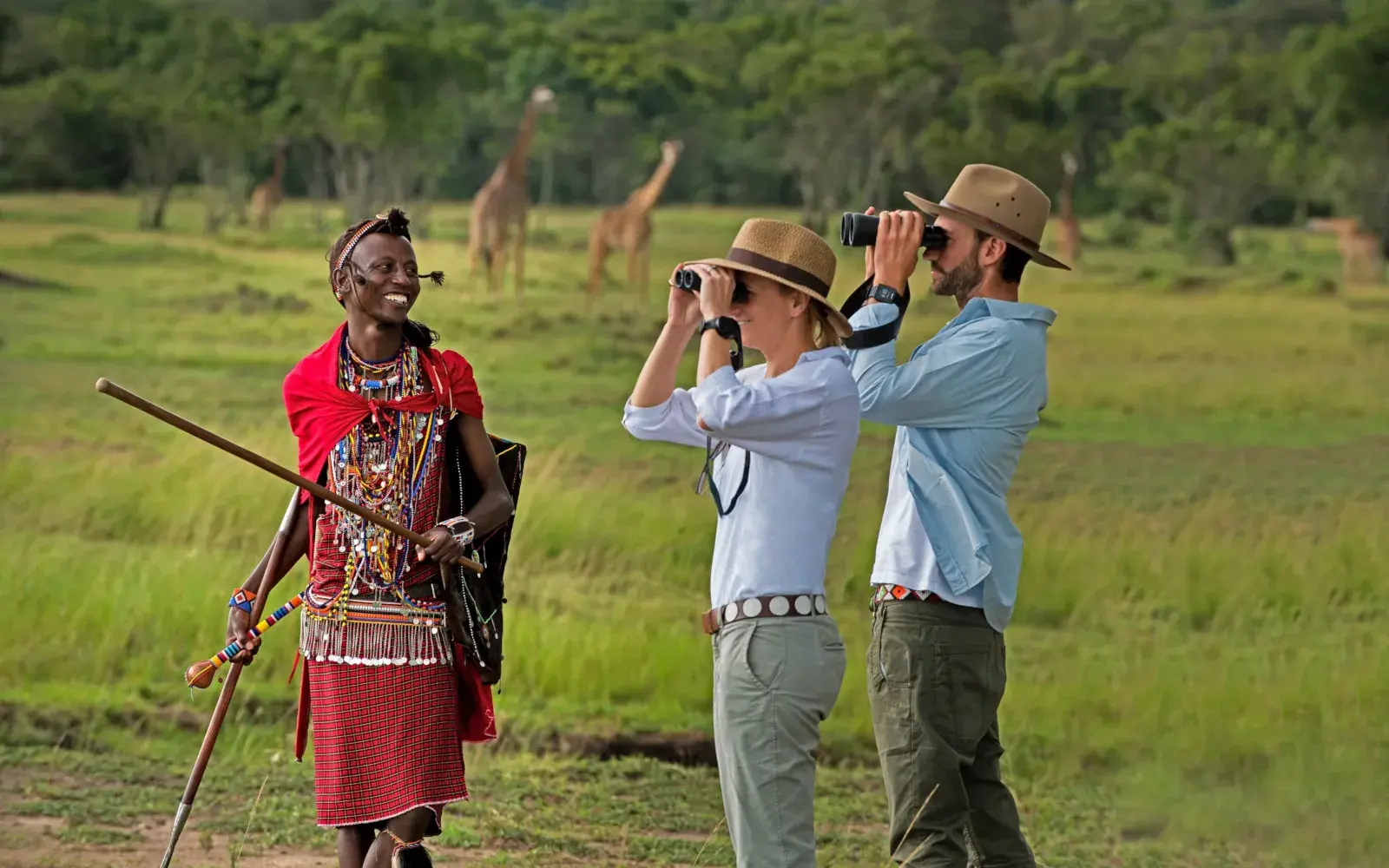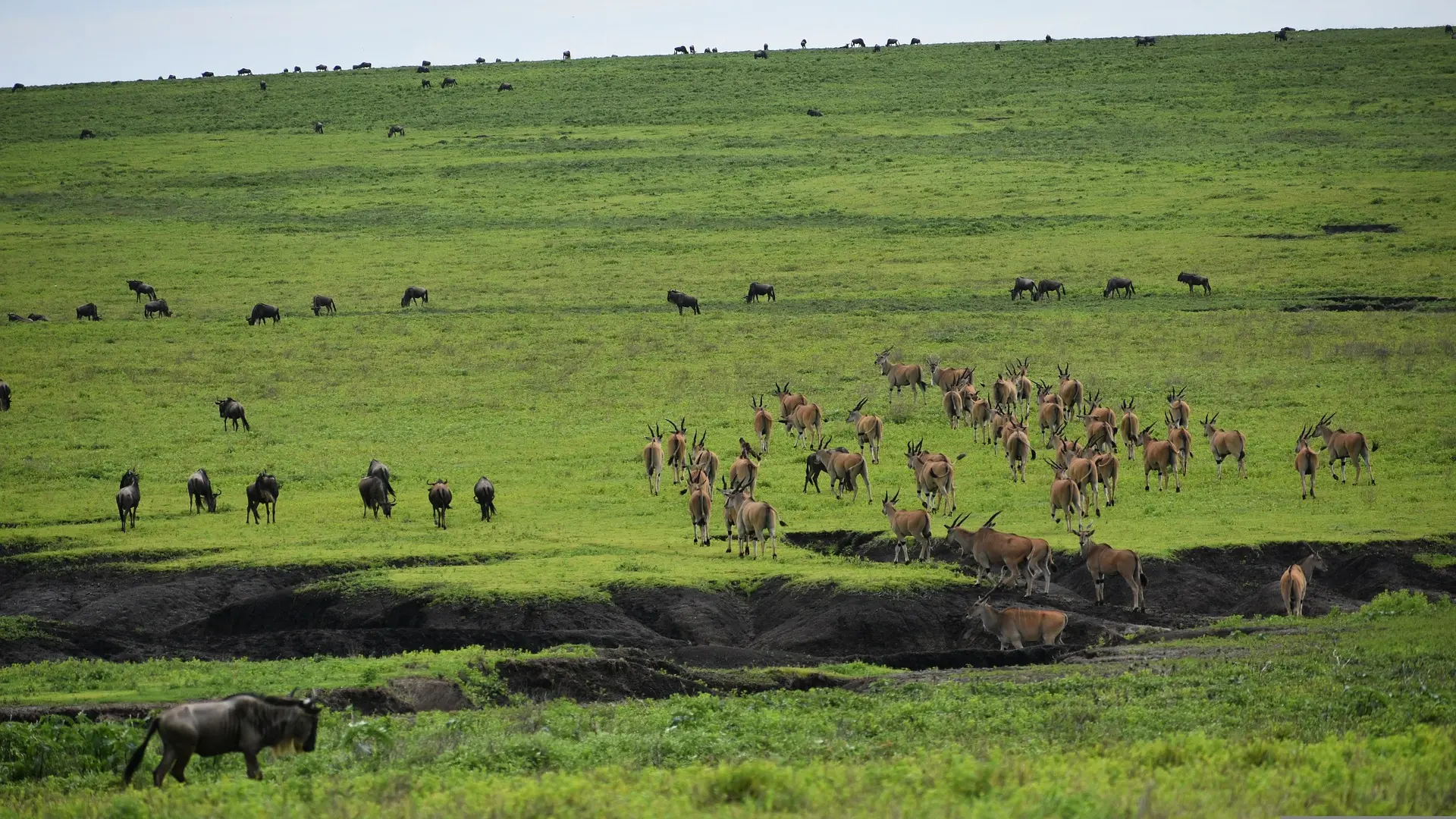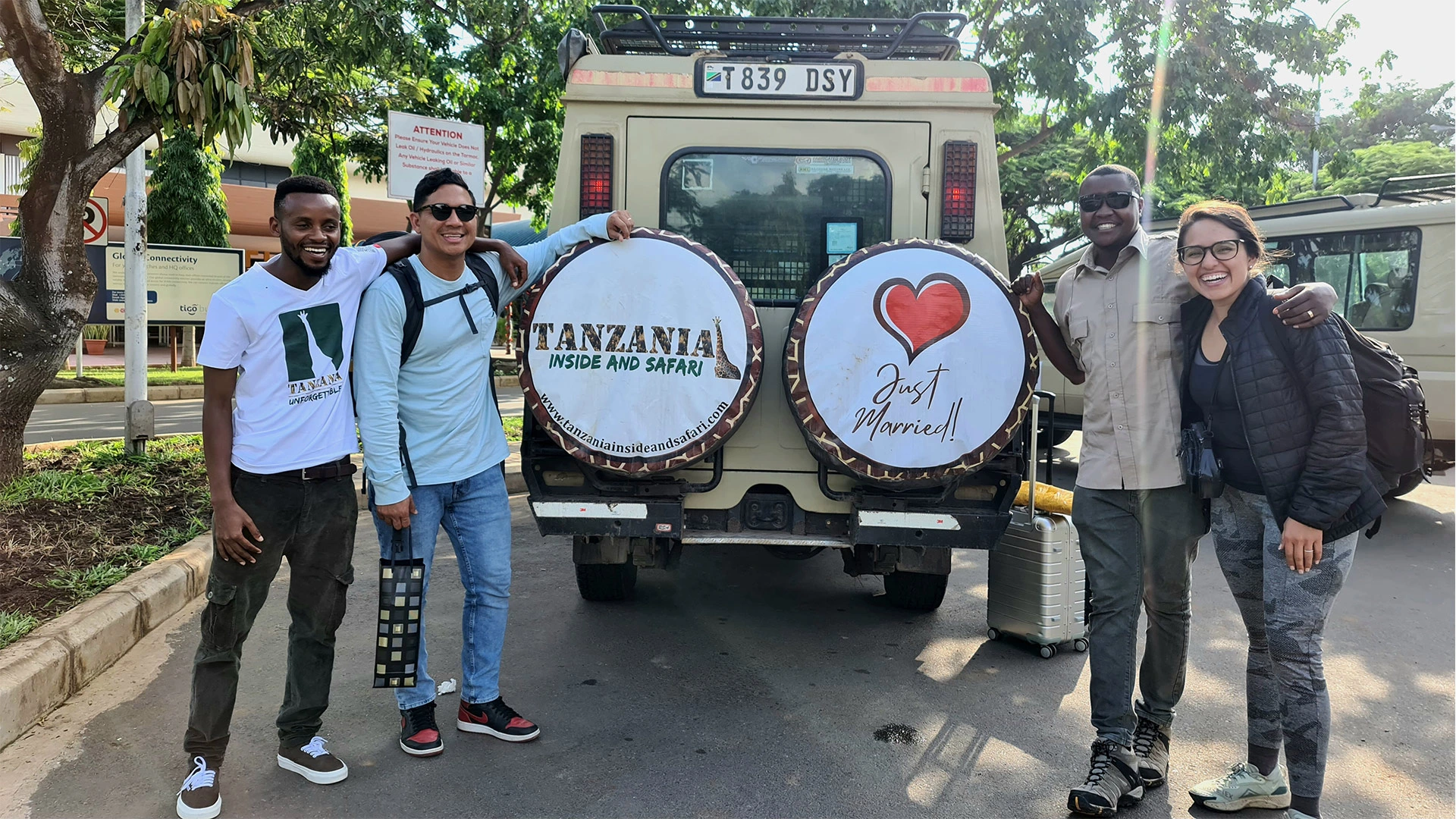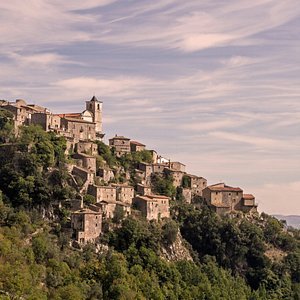
Serengeti National Park
Few people forget their first encounter with Serengeti National Park. Perhaps it is the view from the summit of Naabi Hill at the park’s entrance, from where the Serengeti’s grasslands appear to stretch to the very ends of the earth.
Or maybe it’s a coalition of male lions stalking across open plains, their manes catching the breeze. Or it may be the epic migration of animals in their millions, following the ancient rhythm of Africa’s seasons. Whatever it is, welcome to one of the wildest places –one of the greatest wildlife-watching destinations on earth.
It’s here on the vast plains of the Serengeti that one of earth’s most impressive natural cycles as played for years as hundreds of thousands of hoofed animals primeval rhythms of survival, move constantly in search of fresh grasslands. The most famous, and numerous, are the wildebeest (of which there are some 1.5 million) and their annual migration is the Serengeti’s calling card. There are also resident wildebeest populations in the park and you’ll see these smaller but still impressive herds year round. In February more than 8000 wildebeest calves are born each day, although 40% of this will die before reaching four months old. A few black Rhinos in the Moru Kopjes area offer a chance for the Big Five, although they’re very rarely seen.
The 14,763 sq km Serengeti National Park is also renowned for its predators, especially its lions. Hunting alongside the lions are cheetahs, leopards, hyenas, jackals and more. This feasts on zebras, giraffes, buffaloes, Thomson’s and Grant’s gazelles, topis, elands, hartebeests, impalas, klipspringers, duikers and so many more. It’s an incredible bird watching destination, too, with over 500 species.
See our Northern Tanzania Safari itineraries
Sights
Seronera & the South
Visiting or staying in Seronera, at the heart of the park and readily accessed from both Arusha and Mwanza, involves something of a trade-off. On the one hand, this is wildlife central, with sightings of lions (around 300 live in the park’s south alone), leopards and cheetahs almost guaranteed. At the same time, such abundance comes at a price – you may find yourself among a pack of 20 vehicles jostling to look at a single lion.Southeast of Seronera is a prime base for wildlife watching during the December–April wet season, when it’s full of wildebeest. This corner of the Serengeti also has year-round water and a good mix of habitats. Most Seronera safaris concentrate along the Seronera River and with good reason – the trees along the riverbank are home to one of the world’s densest concentration of leopards, while lion sightings are common. Lion sightings are also probable around the Maasai Kopjes, Simba Kopjes, Moru Kopjes, Gol Kopjes and Barafu Kopjes, and around Makoma Hill. The vast plains south of the Seronera River, often known simply as the Serengeti Plains, are particularly good for cheetahs. The plains that rise towards the Kamuyo Hills west of the Seronera River (draw a line west of the Seronera Wildlife Lodge) are particularly good for elephants, spotted hyenas and cheetahs.
Grumeti & the Western Corridor
The migration usually passes through the Serengeti’s Western Corridor, and the contiguous Grumeti Game Reserve, sometime between late May and early July. The crossing of the Grumeti River may not rival that of the Mara River further north, but it’s still one of the migration’s great spectacles. During the rest of the year, lions and leopards are prevalent along the forest-fringedGrumeti River, which also has hippos and giant crocodiles, north of the river, try the Kitunge Hills, Ruana Plain and just about anywhere in the Grumeti Game Reserve, while south of the river concentrate on the Ndabaka Plains, Simiti Hills, Dutwa Plains, Varicho Hills and down to the Mbalageti River. These western reaches of the Serengeti are most easily reached from Mwanza. If driving from the Ndabaka Gate, count on at least half a day to reach Seronera, more if you stop along the way.


